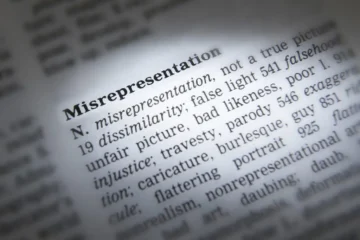Teaching your children the value of money.
Teaching your children the value of money. This is how you start…..
Teach the Basics – Money 101
Teaching your children the value of money.is the most important thing you can do because children of today are at risk of becoming financially irresponsible in the future.
To most children, money seems to grow on trees. They have a vague understanding of how their parents get them food, clothing, and toys. It seems to a child as though people just go to the store, get what they want, and leave.
So, whose responsibility is it to teach them how to handle money? Parents hold the weight of that lesson, and it’s an important one! Without the proper education in dealing with money, children of today are at risk of becoming financially irresponsible in the future.
The important lessons about money that you need to teach your children may seem basic to you at first, but they need to be explained in depth to your children to make sure they know all they need to know to get by in the world. It’s never too young to start.
What Is Money and What Does It Do?
Does your child understand that money is used to get “stuff”? Are they asking questions about money and what it does? If your answer is yes, then chances are they’re ready to learn more about it.
The best time to start this type of explanation is around the age of three. Children tend to notice their parents at the store and see them handing the cashier money before they can get their things.
Questions about “What is that?” or “What does that do?” start rolling in at a young age and it’s important to take advantage of these teachable moments and start with explaining to them that, in order to get food and toys and clothes for the family, you have to give the store money first.
It’s especially important at a young age to teach children about money using the real thing. Present your child with one of each coin and bill (the bills don’t need to go above R10 at first).
Practice going over the sizes, values, and have them do simple math if they’re old enough to do those calculations. Learning to recognize each coin and what it does from a very young age is the most basic lesson in learning how to manage money, but it provides the foundation needed to understand how it all works.
How Do You Get Money?
So, now that your child understands what money is, you need to teach them that it doesn’t “grow on trees”. Explain to them that, when you go to work, you do a special job that you get money for.
This part of the lesson is the perfect time to introduce an allowance. You can either give them a few rands per week to practice counting and saving or you can give them a specific job to do around the house to “earn” their own money.
We don’t suggest making this chore something that they normally do, such as making their bed or cleaning their room. Carefully choose something that your child is able to do, depending on their age, but would not necessarily choose to do on their own (ex: set table, walk the dog, wash the car, etc.) and “pay them for that job.
This way, they get to see that, when they do their special job, they can earn money on their very own.
How to Shop Savvy?
When your child first begins to earn their own money, let them choose how to spend it. Take them to the store with you with R5 in their pocket so they can see what that R5 will buy them.
When they see that shiny toy they’ve been eyeing and ask you if they have enough money, be honest. This is a lesson they need to learn – just because they have a little bit of money, doesn’t mean they need to spend it right away. This small act of waiting for a few weeks to save up enough money will teach them so much in the ways of financial responsibility.
A trip to the grocery store is an excellent tool in teaching your child how far money goes when you are buying things. This should be a special learning shopping trip for just a few things so they can grasp the idea better.
Make a list of all the food you’re planning to make for dinner that night, have a budget, and have your child help you add up the prices of everything you need to buy. This will help them learn that they need to plan for what they buy, otherwise they might not have the money to pay for it.
Needs vs. Wants
“I need it!” is a phrase many children utter at a very young age. Everything they want becomes a need and it’s completely logical in their minds to say that they “need” a piece of chocolate.
According to a child, they DO need that chocolate, so it doesn’t make sense to them why they wouldn’t buy it. Teaching your child the difference between needs and wants is not going to be an easy task. The best way to do this lesson is to practice while out shopping with your child.
At the grocery store, show them a gallon of milk (need) and a box of their favorite cookies (want) and ask “Which one of these do you need to make you healthy?” Eventually, they will learn the difference between the things they want because they like them and the things they need because they are important.
A harder aspect of the needs vs. want lesson is going to be understanding that there are some things that cost money that we don’t even think about on a daily basis, such as water, heat, etc.
Those things cost money and are easy to forget as an adult that they aren’t free, so it can be difficult for a child to grasp this concept. Growing up, most children are always warm, always have enough light to see their toys in their room, and are always sitting in a warm bubble bath.
They’re raised with these things and have no reason to believe that they aren’t free or that not everyone is able to afford them. For instance, a child might suggest turning lights off when they aren’t using them to save money on electricity.
Borrowing Money (Debt and Credit)
Once your child can grasp the idea of spending and saving money, and they’ve begun to manage a little bit of their own money (either through an allowance or extra jobs around the house), you can begin to introduce the idea of borrowing money.
Next time you’re out at a store and they find something that they want to buy but do not have their money with them, tell them you will buy the toy for them as long as they pay you back when you get home.
This can be a very good teachable moment to talk about short term loans. Upon returning home, remind them of their debt and have them pay you the exact amount of the toy so that they can see actual money was spent when they borrowed from you.
If, when you return home with the item they purchased on credit, they don’t have enough money, have them pay you what they do have. With the remaining balance, have them write an IOU and take it out of their following allowances until the debt is repaid.
This recurring deduction until their debt is paid off will help them understand what it is like to owe money for a long period of time.
We know you may still be on the search for other opinions and ideas when teaching your children about money and we don’t blame you!
That’s why we’ve compiled a collection of educational and helpful “pins” on Our Pinterest Page for you to browse through.



1 Comment
Anelazinto · January 8, 2021 at 6:31 pm
Hi I need the money to go to school